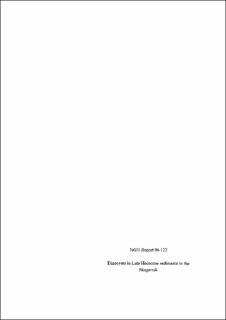| dc.description.abstract | The dinoflagellate cysts in eight samples from a 50 cm long core, four surface samples from the northwestern Skagerrak, and one surface sample located in the northwestern part of the Skagerrak, have been investigated. The dinoflagel- late cyst assemblages in most of the samples are heavily dominated by the cosmopolitan species Operculodinium centrocarpum, and reflect a typical neritic (coastal), north temperate climate similar to that of the present time. The assemblage from one of the stations differs from the others in being dominated by Peridnium faeroense, which reflects the position of the sample location in a more sheltered part of the Skagerrak. Possible changes in the water mass properties can be traced by the cyst record in the investigated deep basin core. The presence of the toxic Gymnodinium catenatum beeing restricted to the lower part of the core, indicates changing hydrographic conditions with an increased influence of colder surface water in the Skagerrak during the last few hundred years. | |

